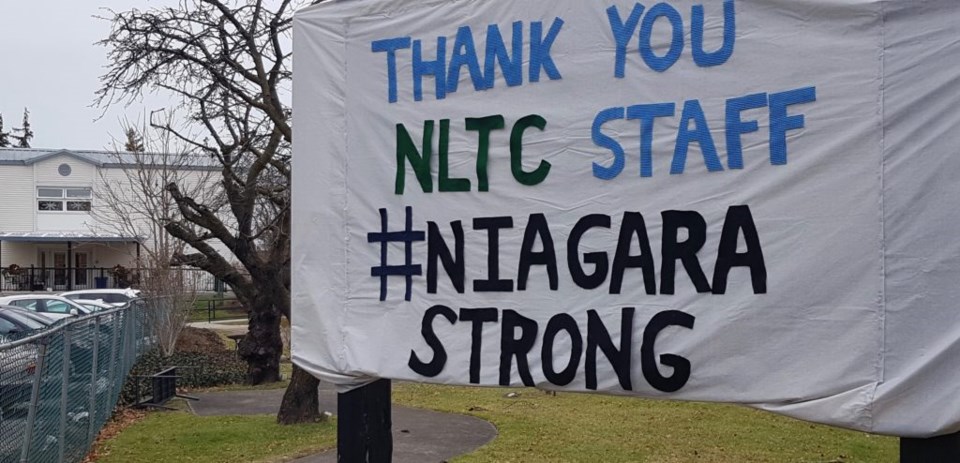
Niagara Long Term Care is experiencing its second COVID outbreak, very different from the one a year ago.
The good news is those who have tested positive in the Wellington Street facility are showing mild symptoms, or none at all, says executive director Chris Poos.
While that seems to be the nature of the omicron variant, it is likely also due to most residents having been vaccinated, 96 per cent with two doses, and 70 per cent with a booster shot, he said.
Beginning Jan. 6, Niagara Public Health is allocating resources so those still in need of a booster shot will be able to receive them.
On Tuesday, Poos reported 14 staff members had tested positive, with one resolved case, and 14 residents with active COVID-19 in the home. That was up from 11 staff and 12 residents testing positive Monday.
Poos says residents are being encouraged to receive third and even fourth shots, while staff and essential caregivers are being asked to get their booster shot, if they haven’t already.
“We know the vaccines are having a very positive effect, along with rapid testing and great infection and prevention control training, in minimizing the impact of the virus.”
The home, with a fairly consistent total of 101 residents, had that number reduced last year from 120, when wards in the older building were eliminated so that rooms are limited to either one or two people. Currently there are 100 residents — one passed away recently, although not from COVID, explained Poos.
He doesn’t know how the outbreak started, he said.
Those deemed “essential caregivers” have been able to visit residents, one at a time, after a negative test and in full protective equipment. but there are no general visitors allowed. Instead, staff have been assisting residents with Skype and FaceTime calls with their families.
Staff levels have been ramped up to provide extra care during this recent outbreak, which was announced by the region Dec. 27, when one resident and two staff members tested positive.
By Monday, across Niagara there were 15 long-term care and hospital facilities with outbreaks, the longest going back to Dec. 2, and the two most recently identified on Dec. 31.
“We’ve been learning and better understanding this virus over the last two years,” says Poos. We’re always learning best practices from each other. All of us, including the community at large, are learning and supporting and helping one another.”
There is new information about the severity of the disease, patterns of infection, and testing, he said, with more tools at their fingertips than during the January 2021 outbreak, especially the availability of rapid tests to use on anyone who comes into the building.
“Because of the nature of this virus, things are changing quickly, and it’s very important to try to stay in front of it.”
That has included going from testing staff every two or three days to daily rapid tests and PCR tests twice a week. Residents are also given rapid and PCR tests in all areas of the home, and symptoms are being closely monitored.
“It’s important to note,” said Poos, “that as the community experiences an increase in cases, the risk in long-term care also increases.”
Outbreak protocols throughout the home include isolating residents in their rooms, where they receive their meals; suspending group activities; increased cleaning; ongoing hand hygiene and PPE audits; and staff cohorts limited to specific areas.
On Tuesday, the region’s website was showing 492 new cases in Niagara, and 4,405 active cases.
In Niagara-on-the-Lake there were 165 people with an active COVID case, up nine from Monday, and 87.5 per 1,000 people infected, with five municipalities in the region showing a higher percentage of cases.
It’s now widely expected, with the rapid spread of the omicron variant and limited capacity for testing, that the number of cases is actually much higher than recorded — Dr. Mustafa Hirji, Niagara’s acting chief medical officer of health, estimated Monday it could be as much as two or three times higher, although it’s difficult to have a “good sense” of how many community cases there are in the region, he said, advising people to stay home, limit social contacts, and follow all the precautions we’ve become accustomed to.
Poos knows that’s what’s needed to prevent outbreaks in long-term care.
“My hope is that everyone follows the guidelines set out by Public Health, and that more people in the community will get vaccinated, including receiving their boosters when appropriate.”